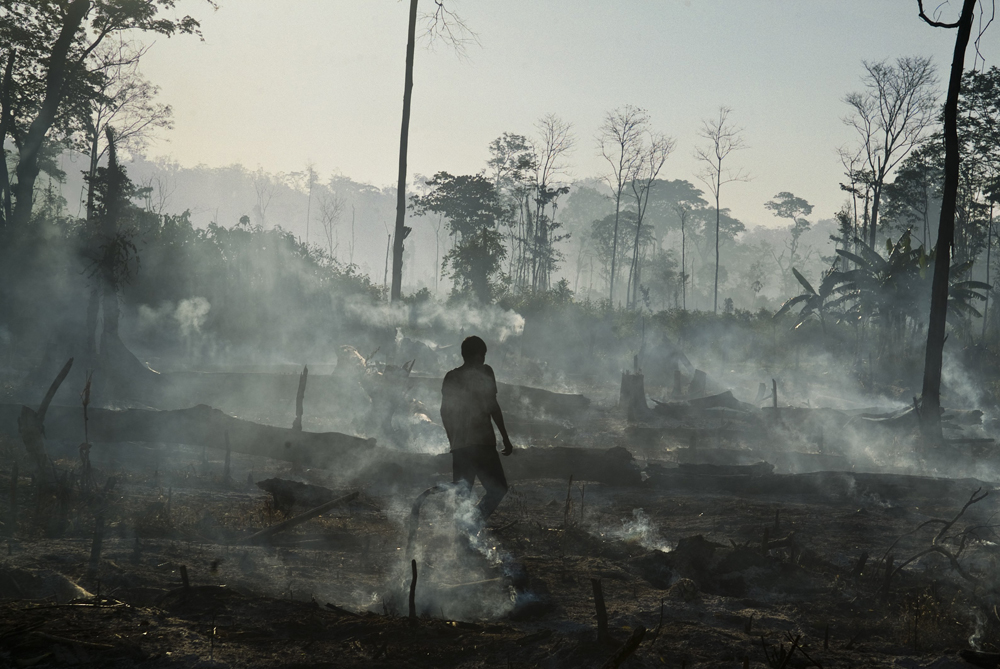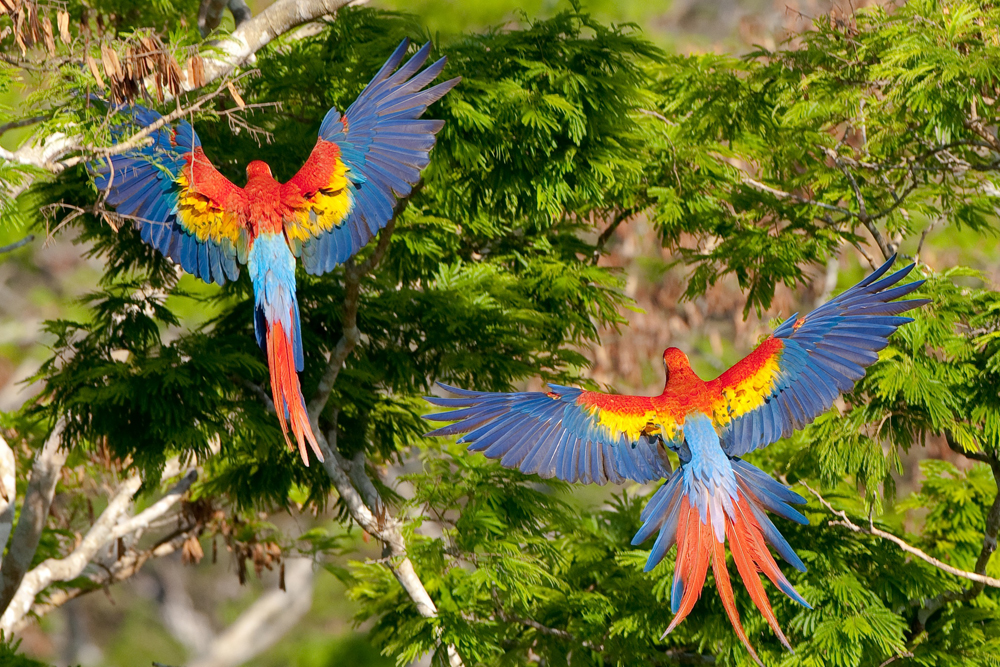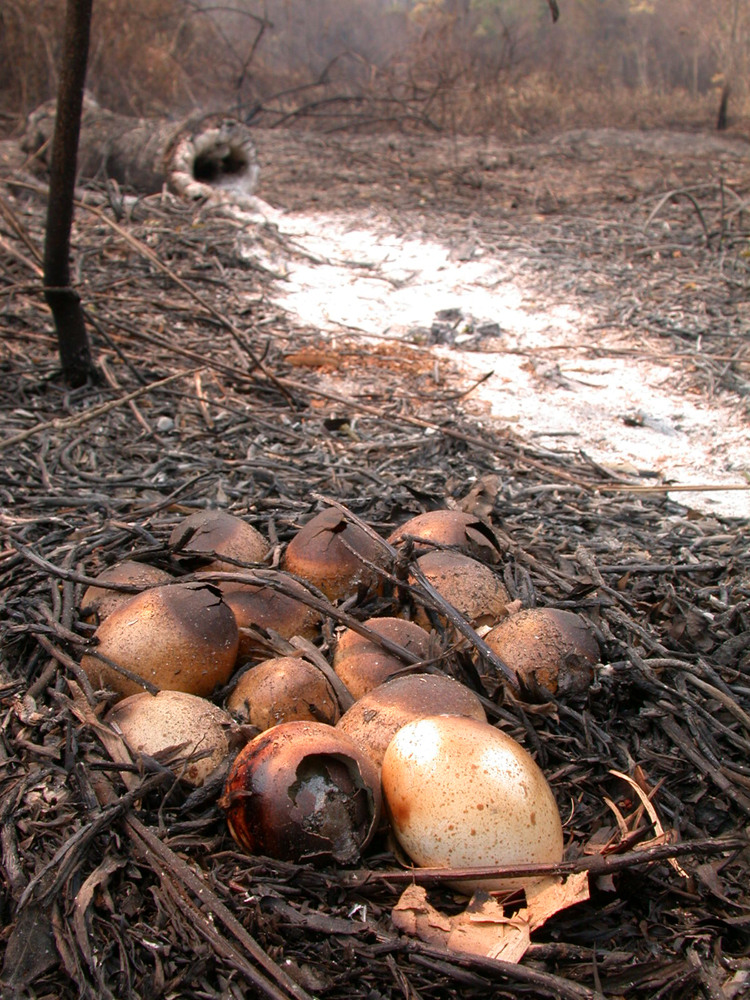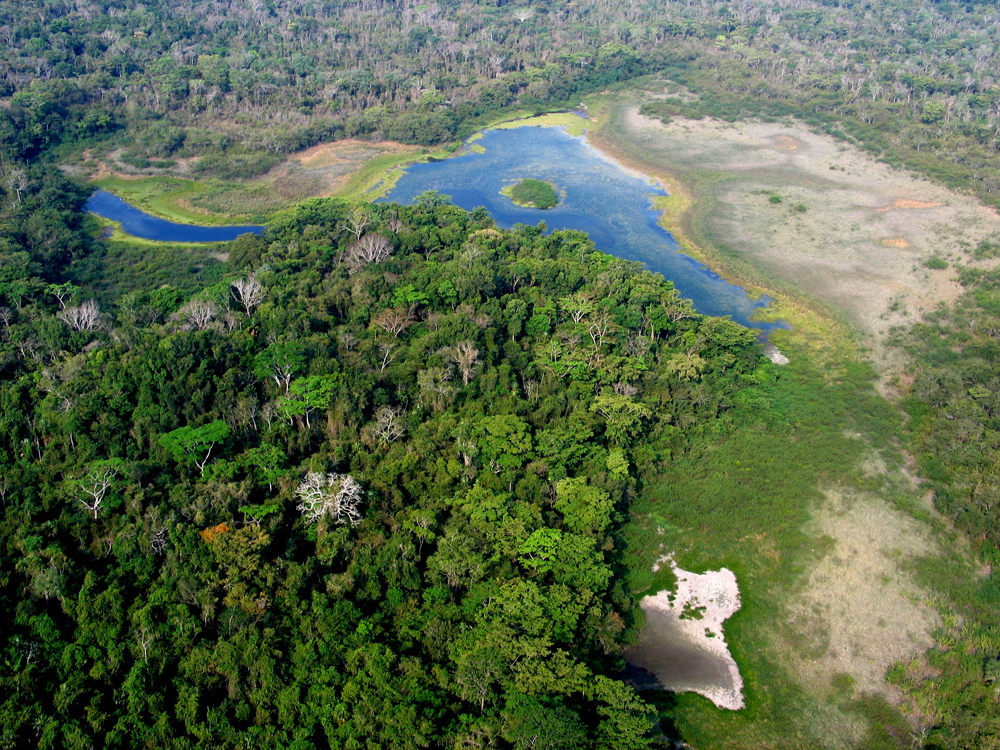
As Forests Burn, Conservationists Launch Global Wildlife Rescue (Op-Ed)

Jeremy Radachowsky is assistant director for the Latin American and Caribbean Program at the Wildlife Conservation Society (WCS). He contributed this article to Live Science's Expert Voices: Op-Ed & Insights.
In 1998, in one of my first real experiences in the tropics, I volunteered as a research assistant to track tapirs in Corcovado National Park. One of Costa Rica's wildest and wettest protected areas, the park had a reputation for getting a lot of rain — up to seven meters of rain each year.
The year I arrived, it stopped raining.
After a month passed with no precipitation, park guards at the remote biological station started scratching their heads. After two dry months, they started to become concerned. After the third bone-dry month, they rerouted the water pipes and started rationing water.
Claimed by fire
As the months wore on, I watched as the forest understory withered and the creek beds dried up. The tapirs and peccaries confined movement patterns to stay near large rivers, gnawing on tree roots for nutrition. El Niño — a cyclical warming of ocean surface temperatures in the eastern Pacific that influences global climate — had arrived.
But that year, the effects of El Niño were more extreme. Many of Central America's protected areas succumbed to forest fires. For example, 40 percent of Guatemala’s Laguna del Tigre National Park burned in a period of a few weeks. Jaguars, tapirs, and peccaries were forced to abandon their territories for islands of unburnt habitat as slow moving reptiles, amphibians and invertebrates died in the fires.
Sign up for the Live Science daily newsletter now
Get the world’s most fascinating discoveries delivered straight to your inbox.
Park managers and local communities were unprepared for the unprecedented climatic conditions. They did not have the technical capacity, the organizational structures, or the flexible financing to react quickly. Arboreal mammals, such as monkeys, anteaters and kinkajous succumbed to smoke inhalation, and even highly mobile birds were devastated since the fires hit during the height of their nesting season.
Eventually, in late May, the first drizzle blanketed the forest, ending the drought. The forest came back to life. The tapirs feasted on fresh greenery. We danced in the rain to celebrate the event, but the climatic extremes of 1998 demonstrated the increasingly devastating impacts of El Niño combined with the effects of global warming, serving as a taste of things to come.

The hottest year on record
At that point, 1998 was the hottest year since regular climate records began. Although global warming has not conclusively been proven to induce El Niño events, most of the hottest years on record have occurred during El Niño years, including 1998, 2005 and 2010. What is so remarkable about 2014 is that it broke all previous records without even being an El Niño year.
Global average temperature is a meaningful indicator of climate change. However, we should also be concerned about the fact that climate change results in more extreme climatic events.
For example, recent El Niño years have brought severe droughts to Central America, Australia and Indonesia, while other regions such as the southwestern United States, southern South America, and the Horn of Africa have endured increased flooding events. Global warming exacerbates the intensity of El Niño events, making extreme events like the 1998 "Super El Niño" twice as likely.

As wildlife withers, rescue is underway
Even more worrisome is the vicious way climate change, El Niño, and local land-use dynamics can reinforce each other to undermine the ecological health of a given area. In Central America, many forests have been fragmented for cattle ranching and African oil palm, resulting in more arid landscapes and more flammable remnant patches of forest.
Once fires begin in dry, highly flammable forests, aerosols in the smoke bind to water vapor in clouds, creating tiny droplets that cannot join together to form rain drops. Even when conditions are right for precipitation, a smoky, rainless haze hangs over the burning forest as if to tease the burning animals below. [Worst Megadroughts in 1,000 Years Threaten US ]
All over the world, extreme events and long-term warming caused by human-forced climate change compound the myriad threats to wildlife, including habitat loss and degradation, hunting, poaching and disease.
The good news is that there are tangible actions that we can take to mitigate the impact of climate change in critical ecosystems.
In areas where ecosystems and people are most vulnerable, WCS works with local communities to help mitigate the impacts of climate change on livelihoods via a process called ecosystem-based adaptation. For example, WCS has implemented programs for fire monitoring and management in Guatemala, helped to establish locally managed marine areas in Fiji, supported rangeland management in Mongolia, and spearheaded planning for climate adaptation and mitigation in Africa's Albertine Rift and Burma.

Global fire safety
In the Guatemala effort, we worked in the Maya Biosphere reserve, where fire regularly escaped from agricultural plots and people were purposefully igniting forests to sabotage and convert them. In addition to the impacts on wildlife, escaped fires threatened to destroy the livelihoods of legitimate forest community residents, who depended upon timber and non-timber forest products for income and subsistence.

During the dry season, WCS and partners used over-flights with small aircraft to detect and map threats, including forest fires, illegal clearing, illegal logging and illegal roadways. We implemented an early fire warning system and burn calendar for community fire management, incorporated satellite "hotspot" monitoring of forest fires, developed fire brigades, and created fire breaks to combat fires. The efforts were extremely successful at limiting the number of escaped agricultural fires and rdeucing fire incidence.
In 2013 — a very bad year for forest fires in the rest of Guatemala — in the area where we intervened, fires were reduced by more 84 percent as compared to the historical average. In 2014 there were almost no wildfires, whatsoever.
Still, huge challenges remain. Riding on top of a baseline of higher average global temperatures, just imagine what the next major El Niño might bring. NOAA is predicting a 50 percent to 60 percent chance of an El Niño event for 2015. Will wildlife be ready?
Follow all of the Expert Voices issues and debates — and become part of the discussion — on Facebook, Twitter and Google+. The views expressed are those of the author and do not necessarily reflect the views of the publisher. This version of the article was originally published on Live Science.









